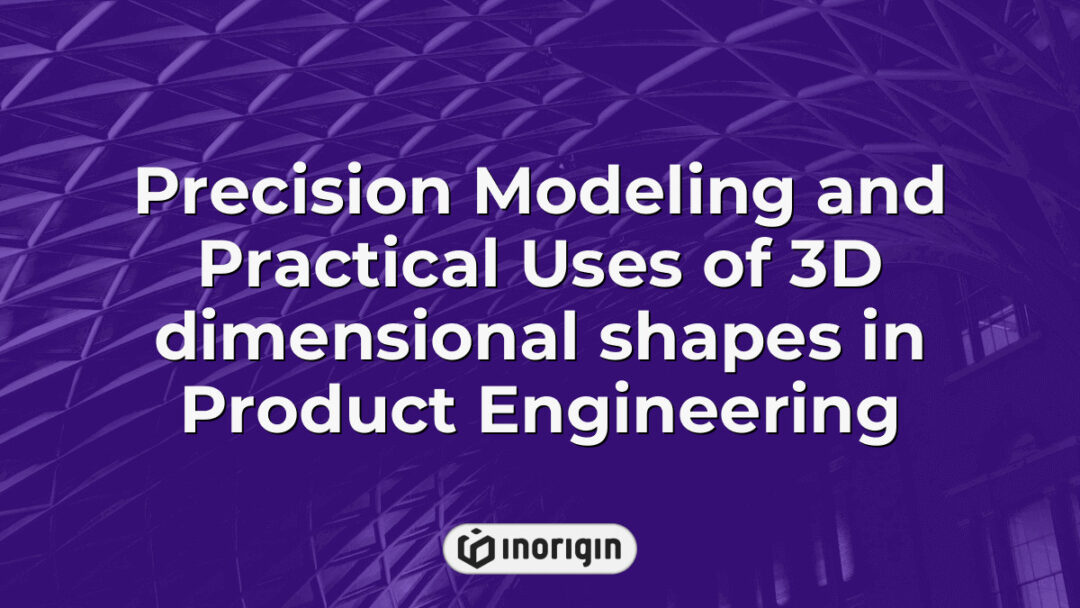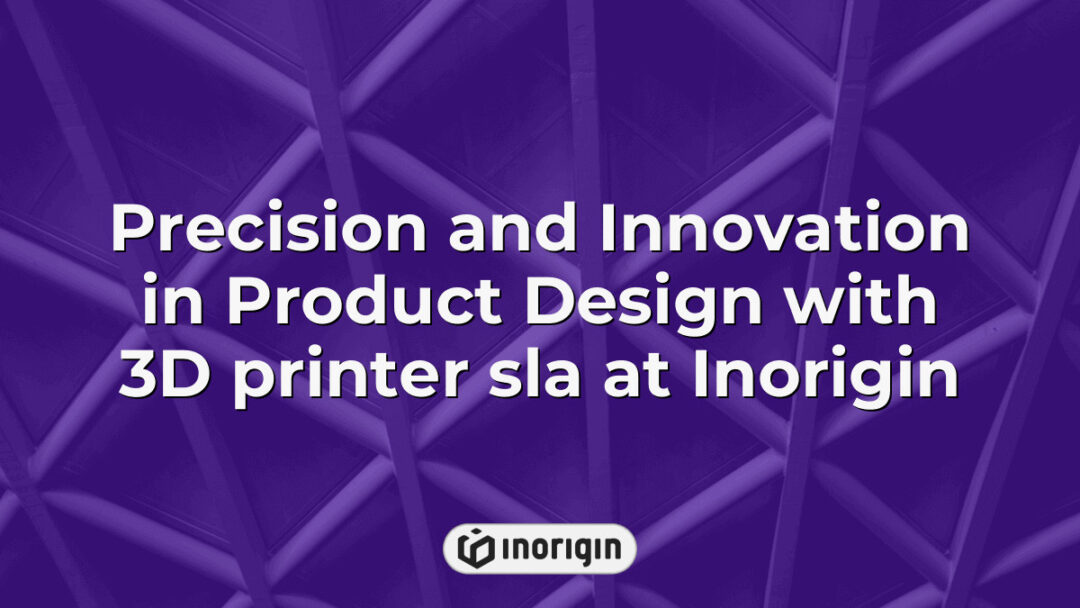In the dawn of a new technological era, the first 3D printer emerged as a revolutionary tool, much like the invention of the printing press centuries earlier that democratized knowledge and transformed communication. Developed by Chuck Hull in 1983, this groundbreaking device not only enabled the layering of materials to create tangible objects from digital designs but also sparked an industrial renaissance that has since permeated various sectors including healthcare, aerospace, and education. With projections estimating that the global market for 3D printing could exceed $21 billion by 2026, it becomes imperative to examine how this innovative technology reshapes manufacturing processes and challenges traditional paradigms. As societies continue to grapple with sustainability and customization demands, understanding the implications of Hull’s invention provides critical insights into its transformative potential in both contemporary and future contexts.
| Aspect | Key Takeaway |
|---|---|
| Introduction to the First 3D Printer | The first 3D printer, developed by Chuck Hull in 1983, pioneered stereolithography technology that transformed how digital designs are turned into physical objects. |
| Technological Breakthrough | It introduced additive manufacturing with ultraviolet light curing photopolymer resin, enabling precise layer-by-layer fabrication unmatched by traditional methods. |
| Industry Impact | This innovation has significantly advanced sectors like healthcare, aerospace, and product design by enhancing prototyping speed and customization. |
| Economic and Market Growth | The 3D printing market, fueled by this technology, is projected to surpass $21 billion by 2026, reflecting widespread industrial adoption. |
| Customization and Efficiency | The technology empowers tailored product development while reducing material waste, aligning with evolving demands for sustainability and design flexibility. |
| Challenges in Early Adoption | Initial hurdles included high operational costs, technical constraints, and the need for standardized materials, which drove continuous innovation in the field. |
| Enduring Legacy | The first 3D printer laid the foundational principles for today’s advanced additive manufacturing solutions, fueling rapid prototyping and market-ready product engineering services like those offered by Inorigin. |
Historical Background And Early Developments In 3D Printing
The historical background and early developments in 3D printing reveal a fascinating trajectory of innovation that began with the pioneering concept articulated by Hideo Kodama in 1981. This period is marked not only by theoretical advancements but also by practical implementations, as Kodama introduced the stereolithography process, which allowed for the creation of three-dimensional objects from photopolymer resins using ultraviolet light. Subsequently, this technological breakthrough led to the unveiling of the first functional 3D printer in 1986, developed by Charles W. Hull. The advent of these technologies facilitated significant shifts within multiple industries such as manufacturing, healthcare, and aerospace. Furthermore, the evolution of 3D printers encapsulates a remarkable interplay between artistic vision and engineering practicality; manufacturers leveraged advancements in computational design alongside innovative materials to enhance production capabilities. As a result, both academic research and commercial applications steadily expanded throughout subsequent decades, highlighting the transformative impact of 3D printing on contemporary fabrication methods.
Innovators And Key Figures Behind The First 3D Printer
The development of the first 3D printer can be likened to laying the cornerstone of a vast architectural structure, establishing a foundation for future innovations in manufacturing technology. Central to this pivotal moment was Chuck Hull, an American engineer and designer who is widely recognized as the pioneer behind the initial concept and realization of stereolithography. In 1983, while working at D Systems Corporation, Hull developed a process that used ultraviolet light to cure liquid resin layer by layer, ultimately resulting in three-dimensional objects. This breakthrough not only marked the inception of 3D printing but also set into motion advancements across various fields including rapid prototyping and additive manufacturing. As one of the key figures rallying support around this groundbreaking technology, Hull’s contributions have had lasting impacts on industrial design, democratizing production capabilities and paving the way for new applications that extend far beyond traditional manufacturing paradigms. The legacy of these early innovators, particularly through their work with pioneering technologies like stereolithography, continues to influence contemporary practices within numerous industries today.
Technical Specifications And Features Of The Initial 3D Printer
The introduction of the first commercial 3D printer marked a significant turning point in manufacturing and design, as it is estimated that around 60% of designers found themselves overwhelmed by the limitations of traditional prototyping methods prior to this innovation. This pioneering device, developed by D Systems Corporation, introduced additive manufacturing—commonly referred to as 3D printing—which allowed for the layer-by-layer construction of objects from digital models. The technical specifications of this initial d printer included an innovative use of stereolithography technology, which employed ultraviolet light to cure photopolymer resin into solid structures with remarkable precision. Furthermore, earlier models typically operated at a resolution of approximately 0.1 millimeters, illustrating the ability to produce intricate designs quickly and efficiently compared to conventional machining processes. As such advancements were achieved, they laid foundational work for contemporary developments in various fields ranging from medical applications to aerospace engineering, demonstrating not only improvements in efficiency but also enhanced capabilities within multiple industries.
Impact Of The First 3D Printer On Industries And Technology
The advent of the first commercial 3D printer has profoundly transformed various industries and technology landscapes. What implications did this pioneering device have on manufacturing processes and product development? First and foremost, it revolutionized traditional fabrication methods by introducing a more efficient means for producing complex geometries. Furthermore, the capabilities of rapid prototyping machines enabled designers to create iterations at an unprecedented pace, streamlining innovation across multiple fields. The notable impacts can be summarized as follows:
- Enhanced Design Flexibility: The introduction of 3D printing allowed for intricate design modifications that were difficult or impossible with conventional manufacturing techniques.
- Cost Reduction: Organizations experienced significant reductions in material waste and production costs due to additive manufacturing processes inherent in d printing.
- Faster Time-to-Market: Rapid prototyping through early 3D models facilitated quicker testing cycles, allowing products to reach consumers faster than before.
- Accessibility of Customization: Industries began offering tailored solutions to meet specific consumer needs without incurring prohibitive expenses.
Such advancements highlight how the initial 3D printer not only addressed existing limitations but also established new paradigms within engineering, healthcare, aerospace, and consumer goods sectors. As these technologies continue to evolve, their foundation firmly rests on the achievements made possible by the first commercial d printer. the ongoing influence of these developments shapes future innovations while challenging businesses to adapt to ever-changing market demands.
Legacy And Influence On Modern 3D Printing Technologies
The legacy of the first 3D printer, developed by Chuck Hull in the early 1980s, fundamentally transformed various sectors by paving the way for modern additive manufacturing technologies. Initially introduced as a prototype known as stereolithography apparatus (SLA), this innovation transitioned into commercialization through the efforts of D Systems Corporation, which produced the first commercial 3D printer in 1987. The influence of these early developments can be seen in contemporary applications where advanced materials and sophisticated printing techniques are utilized to enhance product design and production efficiency across multiple industries. As such, organizations today benefit from not only improved prototyping capabilities but also a reduction in time-to-market, thus emphasizing how foundational principles established by the original technology continue to resonate within current advancements.
- Early adoption set standards for subsequent development of diverse 3D printing methods.
- Introduction of new materials has expanded potential applications beyond initial uses.
- Evolution towards cost-effective and user-friendly systems has broadened accessibility for small enterprises.
This progression highlights that innovations stemming from the first d printer have been pivotal in shaping a dynamic environment for research and development within additive manufacturing, further driving technological advancements that align with emerging market demands.
Frequently Asked Questions
What Materials Were Primarily Used In The First 3D Printer?
The first 3D printer, developed in the mid-1980s by Chuck Hull, primarily utilized photopolymer resin as its foundational material. This innovative device employed a process known as stereolithography (SLA), wherein ultraviolet light was used to selectively solidify liquid polymer layer by layer to create three-dimensional objects. Initially, this method relied heavily on acrylic-based resins due to their ability to cure quickly and form durable structures upon exposure to UV light. Transitioning from traditional manufacturing materials, such as metals and plastics, SLA marked a significant development in additive manufacturing technology. Furthermore, while early prototypes predominantly incorporated these types of resins for their ease of use and effectiveness in precise layering, subsequent advancements led to the introduction of various other materials—including thermoplastics—broadening the scope of applications for 3D printing technologies today. Such evolution illustrates not only the versatility of 3D printers but also their potential impact across diverse industries beyond initial conception.
How Did The Public Initially React To The Concept Of 3D Printing?
The introduction of 3D printing in the early 1980s can be likened to unveiling a new chapter in the narrative of manufacturing technology, akin to discovering fire in prehistoric times. This groundbreaking methodology shifted paradigms and invited both skepticism and curiosity from various sectors of society. Initially, responses were mixed; while some experts heralded it as a revolutionary solution that would democratize production processes and foster innovation, others expressed caution regarding its implications for traditional manufacturing practices. Public reactions included wonder at the potential applications—from prototyping complex models to revolutionizing industries such as healthcare with custom prosthetics—coupled with apprehension about job displacement and safety regulations surrounding this nascent technology. Furthermore, anecdotal evidence from industry forums suggests that initial demonstrations evoked awe but also confusion among attendees who struggled to grasp the practical utility compared to conventional methods. Over time, as understanding grew alongside technological advancements, perceptions began to shift towards recognizing the transformative possibilities inherent in 3D printing, ultimately forging a path for broader acceptance within academia and commerce alike.
What Were Some Of The Challenges Faced During The Early Adoption Of 3D Printing Technology?
The early adoption of 3D printing technology encountered a myriad of challenges despite the initial excitement surrounding its capabilities. One notable obstacle was the high cost associated with acquiring and operating 3D printers, which often limited their accessibility to well-funded institutions or businesses rather than individual consumers. Furthermore, technical limitations posed significant hurdles; for instance, many early models struggled with precision and consistency in producing intricate designs. Alongside these practical issues, there were regulatory concerns that emerged as policymakers grappled with the implications of widespread use of this disruptive technology—particularly regarding intellectual property rights and safety standards. Additionally, the lack of standardized materials further complicated matters, as practitioners had to navigate an untested landscape characterized by various proprietary substances and inconsistent results. Despite these multifaceted challenges, the gradual improvement in technology and growing public interest helped pave the way for eventual acceptance and integration into diverse fields such as manufacturing, healthcare, and education. Thus, while initial obstacles may have hindered rapid proliferation, they also catalyzed innovations that ultimately fostered broader engagement with 3D printing as it evolved over time.
How Has The Perception Of 3D Printing Evolved Since The Launch Of The First Printer?
The perception of 3D printing has undergone significant transformation since the introduction of the first printer in the early 1980s. Initially viewed as a niche technology limited to industrial applications, its scope has expanded considerably with advancements in materials and processes over the decades. The initial skepticism surrounding 3D printing revolved around concerns about reliability, cost-effectiveness, and quality of output; however, as technological improvements emerged alongside increased accessibility, these apprehensions have diminished. More recently, developments in software, hardware capabilities, and innovative techniques such as bioprinting have further broadened public understanding and acceptance of this technology. Consequently, various sectors—including healthcare, manufacturing, and education—have recognized the potential for 3D printing to revolutionize traditional practices by enabling rapid prototyping and customization at lower costs. As awareness grows regarding environmental sustainability and resource efficiency linked to additive manufacturing methods compared to conventional subtractive production processes, the adoption rate continues to rise globally. Thus, from an initial status as a complex industrial tool to its current recognition as a transformative force across multiple disciplines, 3D printing reflects a dramatic shift in both perception and application within society.
Are There Any Notable Myths Or Misconceptions About The First 3D Printer?
The advent of the first 3D printer has given rise to several myths and misconceptions that persist within both academic discourse and public understanding. One prevalent myth posits that the invention of 3D printing was a sudden breakthrough in technology; however, this overlooks the incremental developments in additive manufacturing that preceded it. By tracing the evolution of relevant technologies such as computer-aided design (CAD) and laser sintering, it becomes evident that these advancements laid the foundational knowledge necessary for creating a fully operational 3D printer. Additionally, there is often an erroneous assumption regarding the material capabilities of early 3D printers. While contemporary models can utilize a diverse range of materials from plastics to metals, initial iterations were limited primarily to specific plastic filaments, thereby constraining their applicability and production potential. Furthermore, some narratives suggest that once introduced, 3D printing would immediately revolutionize manufacturing processes globally; conversely, widespread adoption faced numerous challenges including cost barriers, technical complexities, and regulatory considerations. Recognizing these myths allows for a more nuanced understanding of how perceptions surrounding 3D printing have developed over time and highlights the need for ongoing education about its historical context and technological implications.
Conclusion
The advent of the first 3D printer marked a transformative moment in manufacturing and design, leading to an estimated market growth of over 25% annually since its inception. This exponential expansion underscores the technology’s profound influence on various industries, solidifying its role as a pivotal innovation for future advancements.
Related posts:
- How Can Additive Manufacturing Revolutionize Product Prototyping? Innovations Driving Faster and Cost-Efficient Development
- Additive Manufacturing Advancements Driving Precision Engineering and Product Innovation at Inorigin
- What is Additive Manufacturing and Its Role in Transforming Product Design and Engineering
- Additive Manufacturing Transform Product Design And Engineering Through Advanced 3D Printing at Inorigin
- Additive Manufacturing Impact Product Development Driving Innovation and Speed at Inorigin Studio
- How Can Design for Additive Manufacturing Impact Your Product Development Process by Enhancing Complexity and Speed at Inorigin




